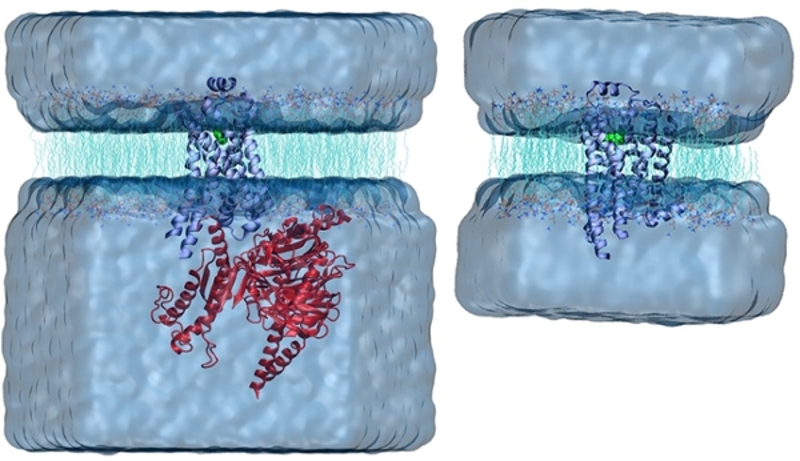

Purdue’s powerful new Anvil supercomputer is helping one researcher accelerate his biomolecular simulations and unlock new treatments for heart disease.
Yinglong Miao, an assistant professor at the Center for Computational Biology and
Department of Molecular Biosciences at the University of Kansas, develops novel theoretical and computational methods and applies these methods to advanced biomolecular modeling and drug discovery.
As an early user of Anvil, Miao and his colleagues have harnessed Anvil’s impressive GPU power to accelerate molecular dynamics simulations. In particular, Jinan Wang, an associate researcher in Miao’s lab, and graduate student Hung Do study G protein activation by the beta1-adrenergic receptor, a key membrane protein that has served as a drug target for treating heart failure.
“Using CPUs this work could take months, if not years,” says Miao. “With the GPUs on Anvil, we can run these simulations much faster. Instead of needing months, we just need a couple of weeks.”
Accelerated molecular dynamics simulations by Miao and his colleagues were not only performed faster on Anvil than on other supercomputers they’ve used, they also matched well with experimental results.

GPU-accelerated molecular dynamics simulations of G protein activation by three different ligands binding to b1-adrenergic receptor (b1-AR) , a key G-protein-coupled receptor (GPCR) targeted for treating heart diseases. Image courtesy of Yinglong Miao.
Anvil has now completed its early user testing phase and is available for the general public to use. Researchers may request access to Anvil via the XSEDE allocation process.
Anvil consists of 1,000 nodes with two 64-core third-generation AMD EPYC processors each, and will deliver over 1 billion CPU core hours to XSEDE each year, with a peak performance of 5.1 petaflops. Anvil's nodes are interconnected with 100 Gbps Mellanox HDR InfiniBand. The supercomputer ecosystem also includes 32 large memory nodes, each with 1 TB of RAM, and 16 nodes each with four NVIDIA A100 Tensor Core GPUs providing 1.5 PF of single-precision performance to support machine learning and artificial intelligence applications.
Research on Anvil will be able to leverage a diverse set of storage technologies, anchored by a 10-plus PB parallel filesystem, boosted with over 3 PB of flash disk. Novel workflows will benefit from block and object storage systems also supported by Anvil.
More information about Anvil is available on Purdue’s Anvil website. Anyone with questions should contact anvil@purdue.edu. Anvil is funded under NSF award No. 2005632.
Miao’s other collaborators on the project include researchers from Cornell University, Arizona State University and Memorial Sloan Kettering Cancer Center.
Writer: Adrienne Miller, science and technology writer, Research Computing, mill2027@purdue.edu
Last updated: February 24, 2022